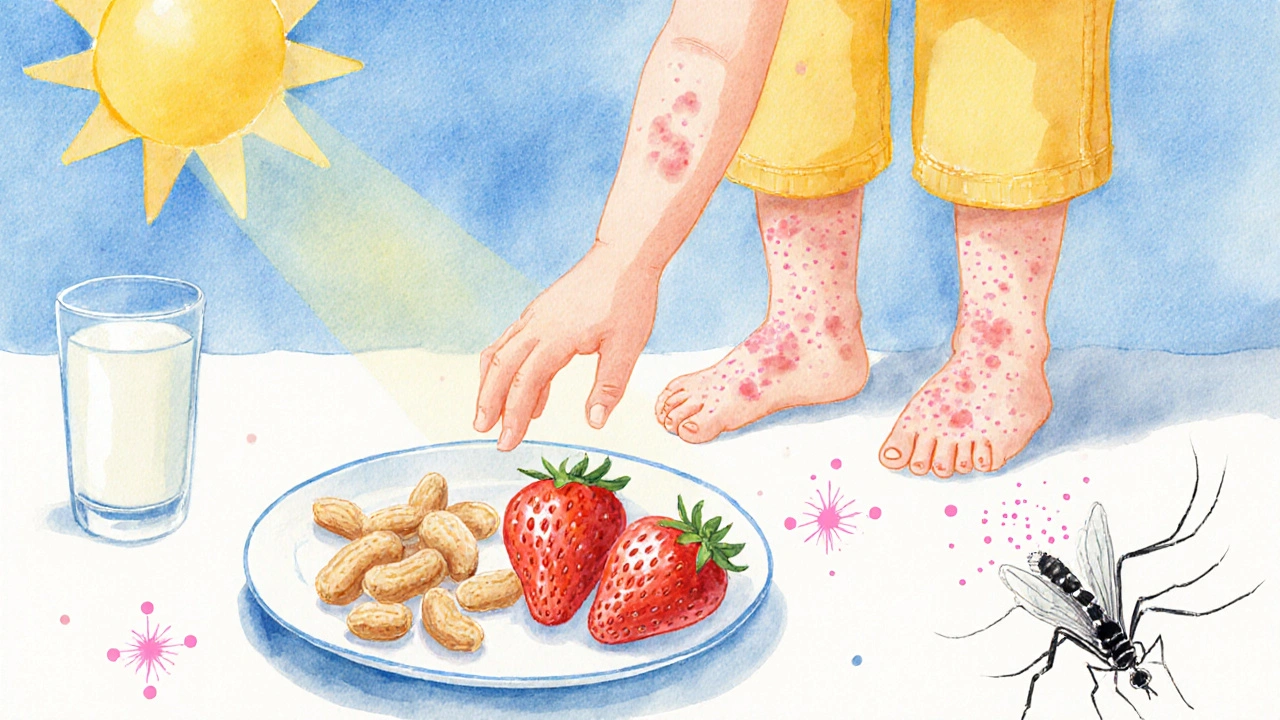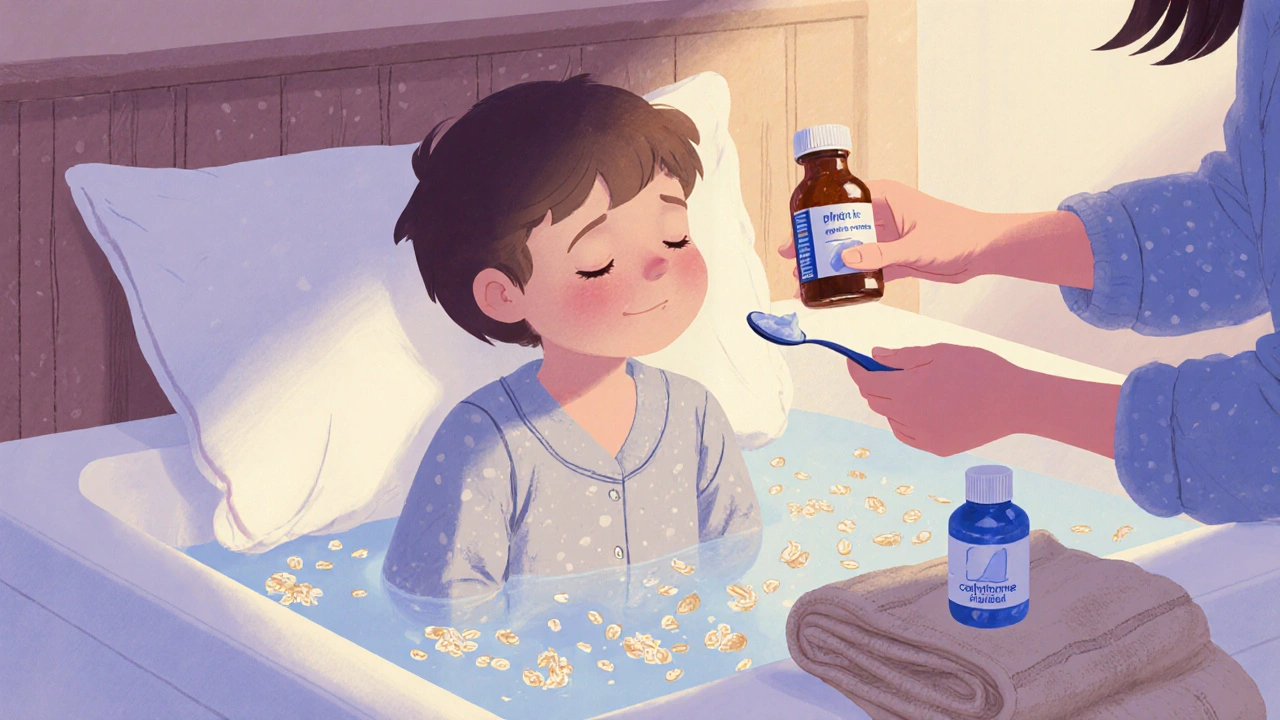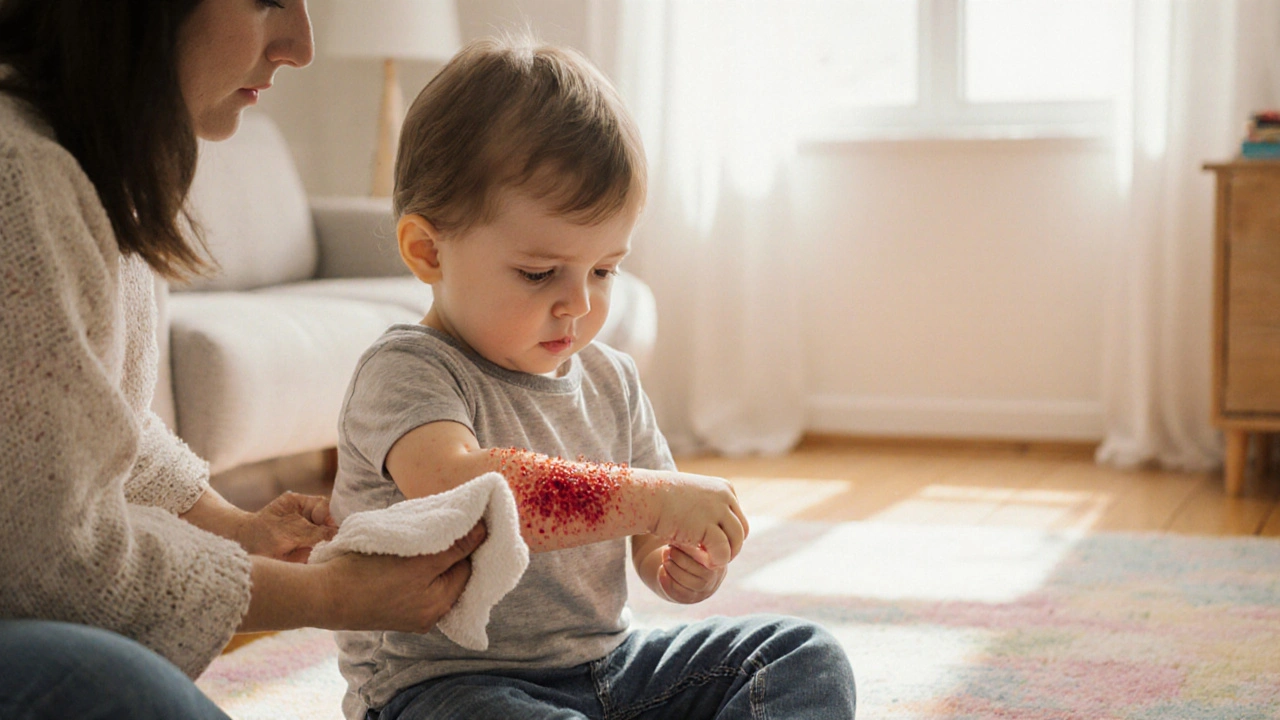Hives Trigger Identifier
Identify Potential Triggers
Select the symptoms your child is experiencing and potential triggers to see what might be causing the hives.
Key Takeaways
- Urticaria (hives) is usually harmless but can signal a serious allergy.
- Look for red, itchy welts that appear suddenly and move around.
- Common triggers include foods, insect bites, infections, and temperature changes.
- Mild cases can be managed at home with cool compresses and age‑appropriate antihistamines.
- Seek emergency care if hives are accompanied by swelling of the face, breathing difficulty, or throat tightness.
When a child breaks out in itchy welts, parents often panic. The good news is that most bouts of hives in children are not life‑threatening and can be handled with simple steps. This guide walks you through what hives look like, why they appear, and how to treat them safely.
What Are Hives?
Urticaria is a skin reaction that produces raised, red or skin‑colored welts, known as hives. These welts are caused by the release of Histamine and other inflammatory mediators from mast cells in the skin. The result is swelling, itching, and a burn‑like sensation that can last from a few minutes to several days.
How to Spot Hives in Kids
Children may not describe the feeling well, so rely on visual clues:
- Sudden appearance of pink or red patches that vary in size (a few millimeters to several centimeters).
- Welts that change shape, appear in new locations, and fade in the same spot within 24‑48 hours.
- Intense itching that leads the child to scratch, rub, or roll on the floor.
- Possible swelling ("angio‑edema") around the eyes, lips, or hands.
- Sometimes a faint, burning sensation before the rash shows up.
If the rash spreads quickly, especially to the face or neck, treat it as a possible emergency.

Common Triggers in Children
Identifying the trigger helps prevent future flare‑ups. Below are the most frequent culprits:
| Trigger Type | Examples | Why It Happens |
|---|---|---|
| Food | Peanuts, shellfish, eggs, milk, strawberries | Allergic IgE response releases histamine |
| Insect Bites | Mosquitoes, bees, fleas | Venom or saliva contains allergens |
| Medications | Antibiotics (e.g., amoxicillin), NSAIDs | Drug‑induced mast cell activation |
| Infections | Common cold, strep throat, viral gastroenteritis | Immune response can spill over to skin |
| Environmental | Cold air, heat, sunlight, pressure from tight clothing | Physical urticaria triggers degranulation |
Keeping a simple diary-note what the child ate, activities, and new products-can reveal patterns over a week or two.
When to Seek Medical Help
Most hives settle on their own, but call a pediatrician or go to the emergency department if you notice any of these red flags:
- Swelling of the lips, tongue, or throat (signs of Anaphylaxis).
- Difficulty breathing, wheezing, or a tight feeling in the chest.
- Hives lasting longer than 72 hours without improvement.
- High fever, severe abdominal pain, or vomiting accompanying the rash.
- Recurrent episodes that appear without an obvious trigger.
In emergencies, administer an epinephrine auto‑injector if prescribed, and call emergency services immediately.
Home Care and First‑Aid Steps
- Cool Compress: Apply a clean, damp cloth or a cold pack (wrapped in a towel) to the affected area for 10-15 minutes. This reduces itching and swelling.
- Bathing: A lukewarm oatmeal bath (colloidal oatmeal) calms the skin. Avoid hot water, which can worsen itching.
- Clothing: Dress the child in loose, breathable fabrics (cotton) to prevent further irritation.
- Hydration: Encourage fluids; dehydration can intensify skin reactions.
- Medication: Use an age‑appropriate antihistamine (see next section).

Medications Parents Can Use Safely
The most common drug class for mild urticaria is antihistamines. They block the effect of histamine on skin receptors, easing itch and reducing welts.
| Drug | Age Range | Typical Dose | Onset of Relief | Common Side Effects |
|---|---|---|---|---|
| Cetirizine | 2years+ | 5mg once daily | 30minutes | Sleepiness (mild), dry mouth |
| Loratadine | 2years+ | 5mg once daily | 45minutes | Rare headache, low fatigue |
| Fexofenadine | 2years+ | 30mg twice daily | 1hour | Very low sedation, mild nausea |
If the child is under two years old, consult a Pediatrician before giving any medication.
For more severe cases where hives do not respond to antihistamines, a short course of a low‑dose Corticosteroid (e.g., prednisone) may be prescribed, but this is a doctor‑only decision.
Preventing Future Outbreaks
- Food Safety: Introduce new foods one at a time and watch for reactions.
- Insect Protection: Use child‑friendly insect repellent, keep clothing tight‑weave, and treat any bites promptly with a cold compress.
- Skin Care: Avoid harsh soaps, fragrance‑laden lotions, and overly hot showers.
- Medication Review: Keep an updated list of any drugs the child takes; discuss alternatives if hives recur after a specific medication.
- Stress Management: Emotional stress can trigger urticaria in some children; encourage play, adequate sleep, and calm routines.
Documenting triggers and treatments in a notebook or a phone app helps the Pediatrician fine‑tune management plans.
Frequently Asked Questions
Can hives be a sign of a food allergy?
Yes. When a child’s immune system identifies a food protein as harmful, it releases histamine, which often produces hives. An elimination diet under medical supervision can confirm the culprit.
How long do hives usually last in kids?
Acute hives typically resolve within 24‑48hours. If they persist longer than three days or keep coming back, it’s considered chronic urticaria and needs further evaluation.
Is it safe to give my child an adult dose of antihistamine?
Never. Children metabolize drugs differently, and dosing is weight‑based. Always follow the pediatric label or a doctor’s advice.
When should I use an epinephrine auto‑injector?
If hives are accompanied by swelling of the lips, tongue, or throat, or if the child has trouble breathing, give the prescribed epinephrine immediately and call emergency services.
Can stress cause hives in children?
Stress can exacerbate urticaria by prompting the release of cortisol and other mediators that influence mast cells. Relaxation techniques and a stable routine often help reduce flare‑ups.

Comments (16)